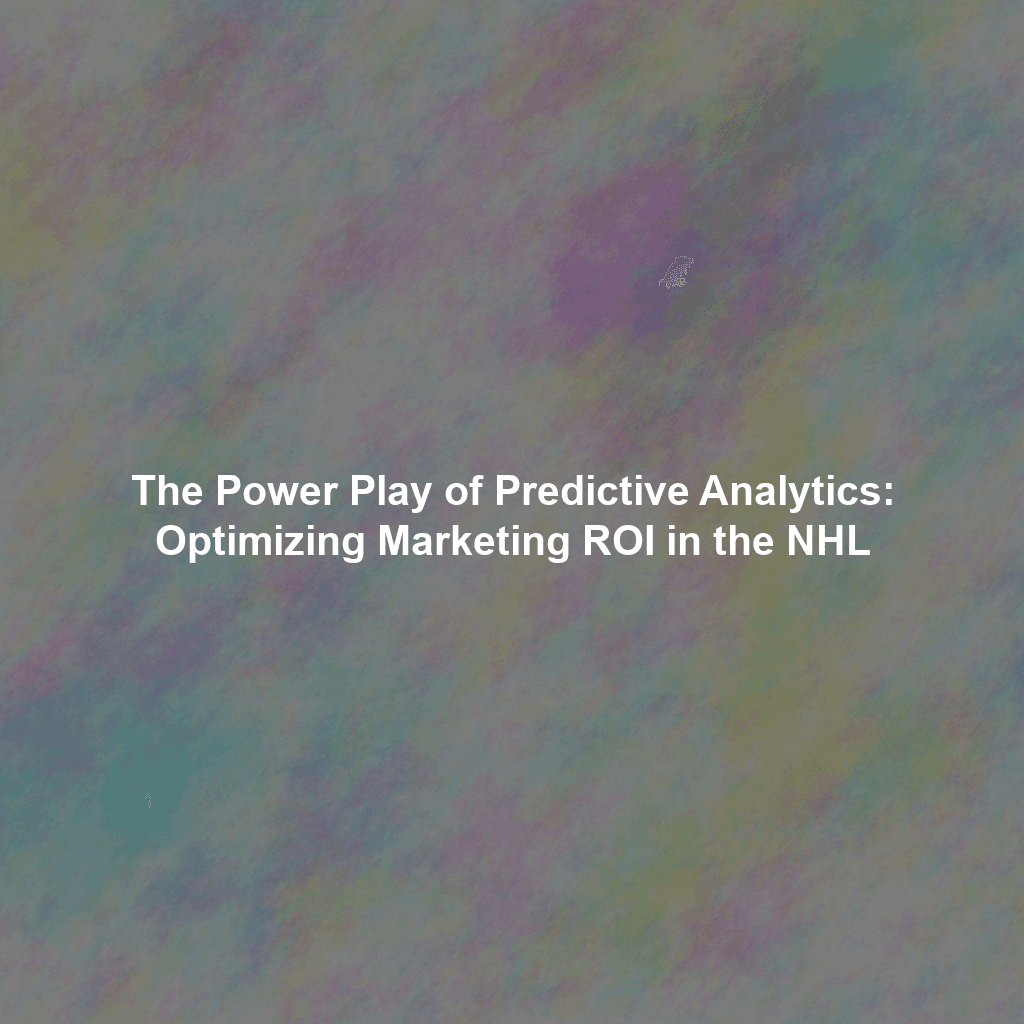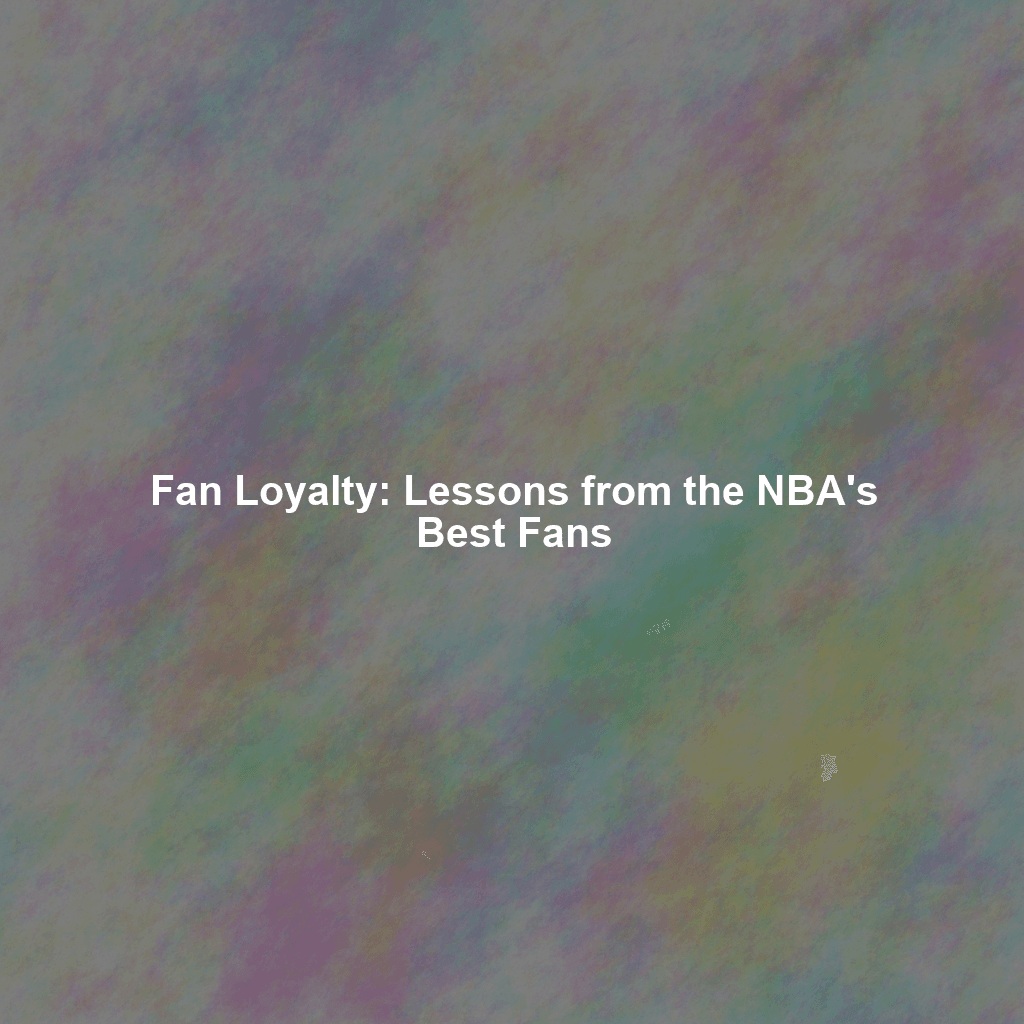Introduction: MLS and the Rise of Influencer Marketing
Why MLS is a Prime Example for Influencer Marketing
Several factors make MLS a particularly strong case study for influencer marketing:
- Demographic Diversity: MLS audiences are incredibly diverse, reflecting the multicultural landscape of North America. This allows brands to target specific demographics with tailored messaging.
- Passionate Fan Base: MLS fans are known for their intense loyalty and dedication to their teams. This passion translates into higher engagement rates and greater receptivity to influencer-driven content.
- Growing League Popularity: MLS is experiencing rapid growth in popularity, attracting a younger and more digitally savvy audience. This makes influencer marketing an increasingly relevant and effective way to reach this demographic.
- Authenticity and Accessibility: Compared to leagues like the NFL or NBA, MLS players often have a greater sense of accessibility and authenticity, which resonates with fans and makes them ideal influencers.
Identifying the Right Influencers: Players and Fan Ambassadors
The foundation of any successful influencer marketing campaign is selecting the right influencers. In the MLS context, this means considering both players and fan ambassadors, each offering unique advantages.
Player Influencers: Star Power and Brand Association
Partnering with MLS players can bring instant credibility and visibility to your brand. However, it’s crucial to go beyond simply choosing the most popular players. Consider these factors:
- Relevance to Your Brand: Does the player’s personality and values align with your brand’s identity? For example, a sports drink company might partner with a high-energy, performance-driven player.
- Audience Demographics: Does the player’s audience align with your target market? Consider factors such as age, location, and interests.
- Engagement Rate: Look beyond follower count and focus on engagement rate (likes, comments, shares). A smaller but highly engaged audience is often more valuable than a large but inactive one. Tools like Social Blade (socialblade.com) can help analyze social media stats.
- Professionalism and Reliability: Ensure the player is professional and reliable. A poorly managed partnership can damage your brand’s reputation.
Example: A men’s grooming brand might partner with an MLS player known for his style and fashion sense, creating content showcasing his grooming routine and promoting the brand’s products.
Fan Influencers: Authenticity and Community Connection
Fan influencers are passionate supporters who have built a strong following within the MLS community. They offer a unique level of authenticity and credibility, as they are seen as genuine voices of the fans.
- Niche Expertise: Fan influencers often specialize in specific areas, such as team news, tactical analysis, or supporter culture. Identify influencers whose expertise aligns with your brand’s messaging.
- Community Engagement: Look for influencers who actively engage with their followers and foster a sense of community.
- Content Quality: Ensure the influencer’s content is well-produced, informative, and engaging.
- Authenticity and Transparency: Partner with influencers who are transparent about their partnerships and maintain a genuine voice.
Example: A ticketing platform might partner with a fan influencer who creates content highlighting the best game-day experiences, offering exclusive ticket deals to their followers.
Tools for Identifying Influencers
Several tools can help you identify relevant influencers in the MLS space:
- Social Media Listening Tools: Platforms like Mention (mention.com) and Brandwatch (brandwatch.com) can help you identify individuals who are actively discussing MLS and related topics.
- Influencer Marketing Platforms: Platforms like AspireIQ (aspire.io) and Upfluence (upfluence.com) connect brands with relevant influencers and provide tools for campaign management and measurement.
- Direct Outreach: Don’t underestimate the power of direct outreach. Identify potential influencers through their social media profiles and reach out to them directly with a personalized message.
Crafting Effective MLS Influencer Marketing Campaigns
Once you’ve identified the right influencers, it’s time to develop a compelling campaign that aligns with your brand’s goals and resonates with the MLS audience.
Define Your Goals and Objectives
Clearly define what you want to achieve with your influencer marketing campaign. Are you looking to increase brand awareness, drive website traffic, generate leads, or boost sales? Your goals will guide your strategy and inform your metrics for success.
Develop a Compelling Narrative
Don’t just ask influencers to promote your product or service; instead, collaborate with them to create a compelling narrative that resonates with their audience. This could involve storytelling, behind-the-scenes content, or user-generated content campaigns.
Offer Creative Freedom
While it’s important to provide influencers with clear guidelines, it’s equally important to give them creative freedom to develop content that feels authentic and engaging. They know their audience best, so trust their judgment and allow them to put their own spin on your message.
Types of Influencer Content
Here are some examples of effective influencer content in the MLS context:
- Sponsored Social Media Posts: Players or fan influencers can create sponsored posts on their social media channels, showcasing your brand’s products or services.
- Video Content: Video content is highly engaging and can be used to tell compelling stories about your brand. Players can create videos showcasing their training routines or game-day preparations, while fan influencers can create videos reviewing games or discussing team news.
- Blog Posts: Influencers can write blog posts reviewing your products or services, sharing their experiences, or providing valuable insights related to MLS.
- Giveaways and Contests: Hosting giveaways and contests in partnership with influencers is a great way to generate excitement and drive engagement.
- Live Events and Appearances: Invite influencers to attend live events or make appearances on behalf of your brand. This can create buzz and generate valuable content opportunities.
Example Campaign: A sports apparel brand partners with an MLS player to create a series of Instagram Reels showcasing the player’s training routine while wearing the brand’s apparel. The reels include a call to action for followers to visit the brand’s website and use a special discount code.
Measuring the ROI of MLS Influencer Marketing
Tracking and measuring the ROI of your influencer marketing campaigns is crucial for determining their effectiveness and optimizing your strategy. Here are some key metrics to consider:
Brand Awareness
- Reach: The number of unique individuals who have seen your content.
- Impressions: The total number of times your content has been displayed.
- Social Media Mentions: Track mentions of your brand across social media platforms.
Engagement
- Likes, Comments, Shares: Measure the level of engagement with your influencer content.
- Website Traffic: Track the number of visitors to your website who are referred from influencer content. Use UTM parameters (Google Analytics URL Builder) to accurately track traffic from specific influencers.
- Click-Through Rate (CTR): Measure the percentage of people who click on links in your influencer content.
Lead Generation and Sales
- Leads Generated: Track the number of leads generated through influencer marketing campaigns.
- Sales Conversion Rate: Measure the percentage of leads who convert into paying customers.
- Return on Ad Spend (ROAS): Calculate the revenue generated for every dollar spent on influencer marketing.
Tools for Measurement
Several tools can help you track and measure the ROI of your influencer marketing campaigns:
- Google Analytics: Track website traffic, conversions, and other key metrics.
- Social Media Analytics: Use the built-in analytics tools on social media platforms to track reach, engagement, and other metrics.
- Influencer Marketing Platforms: These platforms often provide built-in analytics dashboards for tracking campaign performance.
Attribution Modeling: Consider using different attribution models to understand how influencer marketing contributes to your overall marketing funnel. First-touch, last-touch, and multi-touch attribution models can provide valuable insights.
Case Studies: Successful MLS Influencer Marketing Campaigns
Let’s examine a couple of hypothetical (but realistic) examples of successful MLS influencer marketing campaigns:
Case Study 1: Adidas and a Young Rising Star
- Brand: Adidas
- Influencer: A young, up-and-coming MLS player known for his speed and agility.
- Campaign Goal: Increase brand awareness among younger MLS fans and drive sales of Adidas soccer cleats.
- Campaign Strategy: The player created a series of TikTok videos showcasing his training drills while wearing Adidas cleats. He also participated in a live Q&A session on Instagram, answering questions about his training regimen and the benefits of using Adidas footwear.
- Results: The campaign generated over 1 million views on TikTok and a 20% increase in website traffic from Instagram. Sales of Adidas soccer cleats increased by 15% during the campaign period.
Case Study 2: A Local Restaurant Chain and a Passionate Fan Blogger
- Brand: A local restaurant chain near a stadium
- Influencer: A popular fan blogger known for his passionate coverage of the local MLS team.
- Campaign Goal: Drive foot traffic to the restaurant on game days.
- Campaign Strategy: The blogger created a series of blog posts and social media updates highlighting the restaurant’s pre-game specials and atmosphere. He also hosted a giveaway contest, offering free meals to his followers.
- Results: The restaurant saw a 30% increase in foot traffic on game days during the campaign period. The blogger’s content generated over 50,000 impressions and a significant increase in social media engagement.
Potential Challenges and How to Overcome Them
While influencer marketing offers significant potential, it’s important to be aware of potential challenges and have strategies in place to overcome them:
- Finding the Right Influencers: Thorough research and vetting are crucial. Use the tools mentioned earlier and don’t be afraid to ask for references.
- Maintaining Authenticity: Ensure that influencer content aligns with your brand’s values and resonates with their audience. Avoid overly promotional or scripted content.
- Measuring ROI: Implement robust tracking mechanisms to accurately measure the performance of your campaigns.
- Dealing with Negative Feedback: Be prepared to address negative feedback or criticism in a professional and transparent manner. Ignoring negative comments can damage your brand’s reputation.
- Disclosure Requirements: Adhere to all relevant regulations regarding disclosure of sponsored content (e.g., FTC guidelines in the US – FTC.gov). Make sure influencers clearly disclose their partnerships.
Beyond Players and Fans: Micro-Influencers and Niche Communities
While player and prominent fan influencers are valuable, don’t overlook the power of micro-influencers. These individuals have smaller, more niche followings, but often boast higher engagement rates and a stronger connection with their audience. Targeting specific sub-communities within the MLS fanbase can be a highly effective strategy.
For example, a brand selling eco-friendly soccer gear might partner with a micro-influencer who focuses on sustainable living and ethical sports practices. This allows the brand to reach a highly targeted audience that is likely to be receptive to their message.
Also consider engaging with supporters’ groups. Many MLS teams have dedicated supporters’ groups with strong online presences. Collaborating with these groups can provide access to highly engaged and loyal fans.
Conclusion: Capitalizing on the Growing Power of MLS Influencer Marketing
Influencer marketing is a powerful tool for brands looking to reach new audiences, build brand loyalty, and drive business outcomes. By strategically partnering with players and fan ambassadors in MLS, brands can tap into a highly engaged and passionate fan base. By following the guidance outlined in this article – identifying relevant influencers, crafting effective campaigns, and measuring ROI – you can leverage the power of MLS influencer marketing to achieve your business goals.
The key is to remember that authenticity, relevance, and genuine connection are paramount. By prioritizing these factors, you can create influencer marketing campaigns that resonate with the MLS community and deliver lasting results.
 Skip to content
Skip to content

